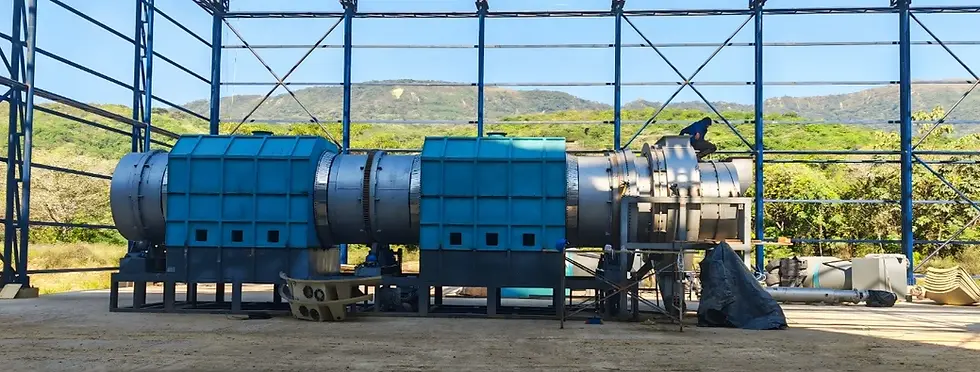How Industrial Charcoal Machines Make Premium Wood Charcoal
- lee784287
- 2月13日
- 讀畢需時 2 分鐘
Charcoal has been used for centuries — from heating homes and cooking food to serving as a key material in metallurgy and agriculture. But today, as the demand for sustainable fuel grows, so does the need for efficient and eco-friendly methods of charcoal production. That’s where the industrial carbonization machine steps in, revolutionizing how we make wood charcoal.
Wood charcoal is a lightweight, black carbon residue produced by pyrolyzing wood — heating it in the absence of oxygen. The process removes moisture and volatile substances, leaving behind high-carbon charcoal that burns hotter and cleaner than raw wood.
Traditional vs. Modern Methods of Making Charcoal
Traditional Pit Method
Involves stacking wood and covering it with soil.
Takes days to complete.
Hard to control temperature.
Produces smoke and environmental pollution.
Low yield and poor-quality charcoal.
Modern Industrial Carbonization
Uses sealed carbonization reactors (also known as charcoal-making machines).
Controlled temperature, pressure, and oxygen levels.
Eco-friendly, efficient, and safe.
Higher yield and consistent charcoal quality.
How Industrial Carbonization Machines Work
Industrial carbonization machines use pyrolysis technology to convert wood into charcoal. Here’s a step-by-step breakdown of how to make wood charcoal:
1. Raw Material Preparation
Collect wood waste, sawdust, bamboo, or tree branches.
Crush large materials to a uniform size.
Dry the feedstock to reduce moisture (ideal: <15%).
2. Feeding
The dried wood is conveyed into the carbonization furnace via a feeder.
Some machines are continuous, while others work in batch mode.
3. High-Temperature Pyrolysis
Inside the reactor, the wood is heated to 400–600°C in an oxygen-free environment.
Volatile gases are released and separated.
The carbon structure remains, forming charcoal.
4. Flue Gas Recycling
Combustible gases are purified and used as fuel for the system.
This reduces external fuel use and cuts operating costs.
5. Cooling and Discharge
Charcoal is cooled down via a water-cooled system.
Final product is collected for packaging or further processing.
Making wood charcoal no longer needs to be a laborious, polluting process. With the help of industrial carbonization machines, businesses and entrepreneurs can produce high-quality charcoal in an environmentally responsible and economically viable way.



留言